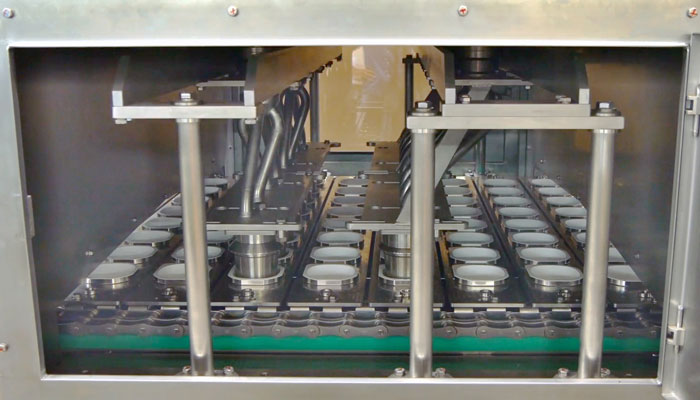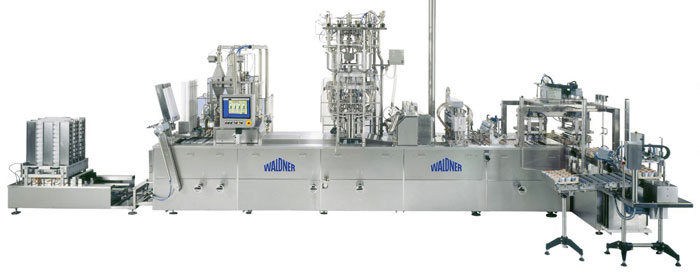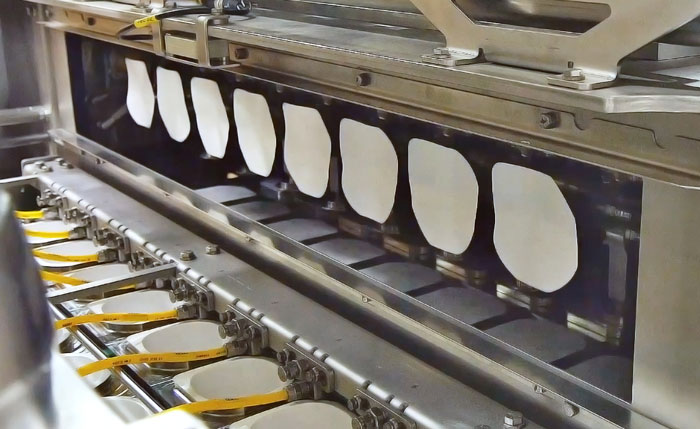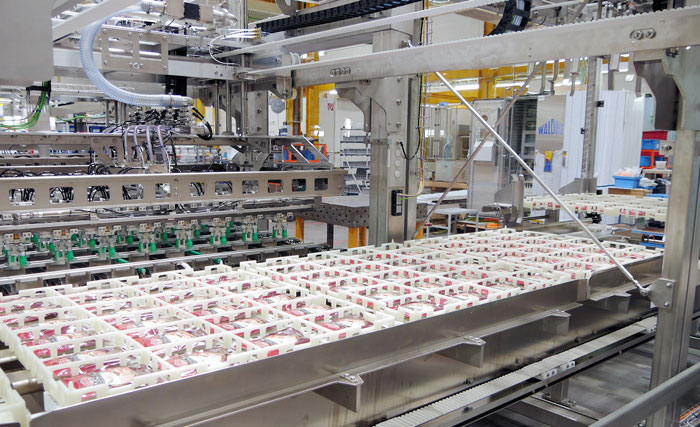 Waldner machine applying hydrogen peroxide sterilization to cups.
Waldner machine applying hydrogen peroxide sterilization to cups.
Max Davis, head of customer success at WNA, explains the different sterilization methods and why customized packaging solutions are key to success.
Efficient sterilization is a crucial step in any food packaging process. It ensures the elimination of pathogenic microorganisms that can lead to food spoilage, thus ensuring food safety and an extended shelf life. Inadequately sterilized products offer serious risks for consumers’ health, especially at a time when the demand for food that is stored for prolonged periods grows exponentially.
But how to choose the right sterilization method for a food product?
Proper sterilization methods are determined by the food type and shelf-life longevity targets. Some products, including yogurts and ready-to-drink coffee beverages, will typically go through the sterilization process while being packed. Containers and lids are freed from microorganisms before receiving the food, and specific techniques are applied to ensure an adequate atmosphere inside the sealed package.
For products with longer expiration dates, such as canned soup and pasta sauce, sterilization will occur after the product is hermetically sealed. It is crucial that a package is accurately sealed for a successful process so it can resist high pressures and temperatures inside the retorts.
Using a highly efficient packaging system that offers varied solutions to meet specific demands is key, regardless of the sterilization process used. This will ensure food safety while boosting productivity.
“Selection and configuration of filling and sealing machines are critical steps in the packaging sterilization process, regardless of whether it occurs before or after the actual packaging. Using the right technology at the right level applied to the right package will always succeed,” explains Max Davis, head of customer success at Waldner North America (WNA).
 Extended shelf-life yogurt machine with extended magazine and tray loading.
Extended shelf-life yogurt machine with extended magazine and tray loading.
Davis explains that Waldner machines offer various sterilizing options for food products during the packaging process. When cup and lid sterilization is required, Waldner systems utilize pulsed light, UV and IR light or hydrogen peroxide treatment. Machines will use a combination of these technologies, one for the cup and one for the lid, to achieve desired sterility results. The technology selection will depend on the product, package type, required sterilization level and total cost of ownership.
A positive flow of sterile air in the filling and sealing environment also helps prevent dust and other floating microbes from entering the sterile environment. Additionally, to help extend the shelf life of certain products, a simple food-grade nitrogen infusion will help drive oxygen away and minimize oxidative deterioration of products.
“We work together with our customers to determine the best solutions based upon their specific products, target shelf life and presentation. By understanding each client’s unique needs, we can best suggest technologies to increase shelf stability,” Davis says.

UV lid sterilization chamber.
Strong seals, smart loading
Products with longer shelf-life expectancies are typically processed in retorts, meaning they are sterilized after the filling and sealing processes. Packaging equipment quality plays a vital role as well. Packages that enter retort machines must be tightly sealed to withstand high pressures and temperature variations of retort machines without bursting or collapsing.
“Our Waldner sealing machines produce high-quality seals in a variety of products, so they can resist the retort process without presenting any issues. Companies that deploy machines with such capabilities are one step ahead, and they can take advantage of a wider range of business opportunities,” Davis says.
Once the sealing process is complete, it is crucial to have an efficient, reliable system in place to load freshly sealed containers into retort trays or baskets for transfer to the retort process.
“The point where systems meet is always a danger zone,” Davis mentions. “Engineering in flexibility throughout the handling processes is key to success, especially when working with plastic trays or a large variety of different packages. Our Waldner’s pick-and-place, automated retort tray handling systems offer smart solutions for our customers, as they increase flexibility, operator safety and production efficiency.”
 Automated loading of pouches into Waldner retort trays.
Automated loading of pouches into Waldner retort trays.
For more information, please contact: